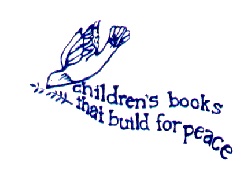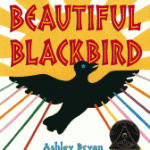Resources upon request: Ann Bausum
We recently created original multimedia resources with author Ann Bausum for customers in Texas. In these original Book Readings you’ll hear Ann share her personal connection to writing Freedom Riders: John Lewis and Jim Zwerg on the Front Lines of …

 Graphic fiction and nonfiction books are increasingly being used in schools to hook reluctant readers or to present topics in a different format. The multimedia materials recommended in this month's column provide you with instructional support to integrate these graphic books into your lesson plans.
Graphic fiction and nonfiction books are increasingly being used in schools to hook reluctant readers or to present topics in a different format. The multimedia materials recommended in this month's column provide you with instructional support to integrate these graphic books into your lesson plans. The incredible thing about comics, to me, is the medium’s diversity. Some people hear the word “comics” and are reminded of newsprint pages filled with superheroes. Others see shelves of manga stacked tight, while some readers are more familiar with hardbound graphic novels and nonfiction volumes. All of these formats and types of books rightly describe comics.
The incredible thing about comics, to me, is the medium’s diversity. Some people hear the word “comics” and are reminded of newsprint pages filled with superheroes. Others see shelves of manga stacked tight, while some readers are more familiar with hardbound graphic novels and nonfiction volumes. All of these formats and types of books rightly describe comics. In late April I attended the Jane Addams Book Award announcement at Chicago's Jane Addams Hull-House Museum, the actual location where the crusader and Nobel Peace Prize recipient supported immigrants and advocated for social justice and racial and gender equality.
In late April I attended the Jane Addams Book Award announcement at Chicago's Jane Addams Hull-House Museum, the actual location where the crusader and Nobel Peace Prize recipient supported immigrants and advocated for social justice and racial and gender equality. The question I'm most often asked by kids is, "Where do your ideas come from?" I always give a concrete answer, like "Someone suggested that to me" or "It happened in my childhood." And while those answers are true for some of what I write, many of my ideas come from somewhere else. But it's hard to put my finger on just where that somewhere else is.
The question I'm most often asked by kids is, "Where do your ideas come from?" I always give a concrete answer, like "Someone suggested that to me" or "It happened in my childhood." And while those answers are true for some of what I write, many of my ideas come from somewhere else. But it's hard to put my finger on just where that somewhere else is. With the Internet at their fingertips, teachers will always have examples of quality writing to share with their students. Use the audio clips featured here to demonstrate the power of opening lines, to explore the use of dialogue, to understand an author’s purpose, and to enjoy wordplay. These multimedia resources are great reasons why educators should infuse technology into writing lessons.
With the Internet at their fingertips, teachers will always have examples of quality writing to share with their students. Use the audio clips featured here to demonstrate the power of opening lines, to explore the use of dialogue, to understand an author’s purpose, and to enjoy wordplay. These multimedia resources are great reasons why educators should infuse technology into writing lessons. I always groan when people ask about my writing process, because what they are really asking is the more complicated question, “How does your mind work?” Even the word “process” confounds me. It implies a tidy, shrink-wrapped procedure. I wish it was that way–a specific set of steps to get me from that awful first draft to a polished manuscript, which is often thirty rewrites down the line. For me, writing isn’t precise. It is a messy evolution.
I always groan when people ask about my writing process, because what they are really asking is the more complicated question, “How does your mind work?” Even the word “process” confounds me. It implies a tidy, shrink-wrapped procedure. I wish it was that way–a specific set of steps to get me from that awful first draft to a polished manuscript, which is often thirty rewrites down the line. For me, writing isn’t precise. It is a messy evolution. Author Robie Harris and illustrator Michael Emberley have worked closely together to create nearly a dozen age-appropriate books for children and teens on human development and sexuality, including It’s So Amazing!: A Book about Eggs, Sperm, Birth, Babies, and Families (Candlewick, 1999)and It’s Perfectly Normal: Changing Bodies, Growing Up, Sex, and Sexual Health (Candlewick, 1994). For Harris and Emberley, the entire research process is of the utmost importance when it comes to creating accurate informational books. From finding the right resources to portraying information in word and illustration, these two have insights to share about the inquiry process.
Author Robie Harris and illustrator Michael Emberley have worked closely together to create nearly a dozen age-appropriate books for children and teens on human development and sexuality, including It’s So Amazing!: A Book about Eggs, Sperm, Birth, Babies, and Families (Candlewick, 1999)and It’s Perfectly Normal: Changing Bodies, Growing Up, Sex, and Sexual Health (Candlewick, 1994). For Harris and Emberley, the entire research process is of the utmost importance when it comes to creating accurate informational books. From finding the right resources to portraying information in word and illustration, these two have insights to share about the inquiry process.

 As educators seek to merge reading and technology into content areas across the curriculum, the following collection of brief recordings will aid them in their search for quality, fine-arts multimedia materials.
As educators seek to merge reading and technology into content areas across the curriculum, the following collection of brief recordings will aid them in their search for quality, fine-arts multimedia materials. One of the questions I’m often asked by students—sometimes with tremulous voices—is about the dreaded “writer's block." It's as if they're asking about the flu or the boogey man. “Do I ever get it?” “Does it ever get me?”
One of the questions I’m often asked by students—sometimes with tremulous voices—is about the dreaded “writer's block." It's as if they're asking about the flu or the boogey man. “Do I ever get it?” “Does it ever get me?” Integrating books throughout content areas and encouraging collaboration between library media specialists and classroom teachers are central to my work with TeachingBooks.net. In this post, I present opportunities for you to partner with art teachers as you invite illustrators to share their passion for art in a classroom setting.
Integrating books throughout content areas and encouraging collaboration between library media specialists and classroom teachers are central to my work with TeachingBooks.net. In this post, I present opportunities for you to partner with art teachers as you invite illustrators to share their passion for art in a classroom setting.